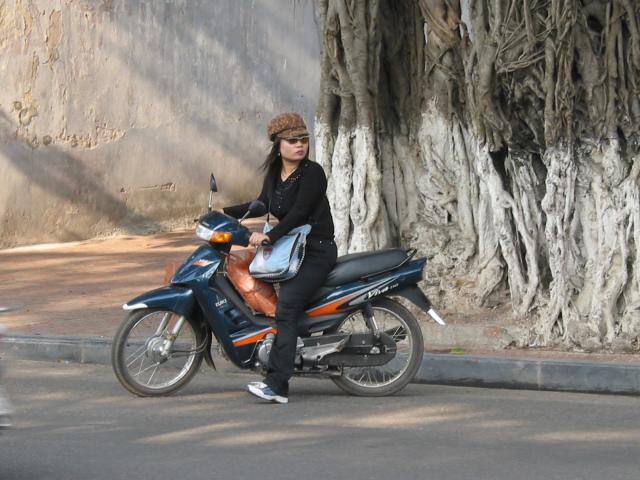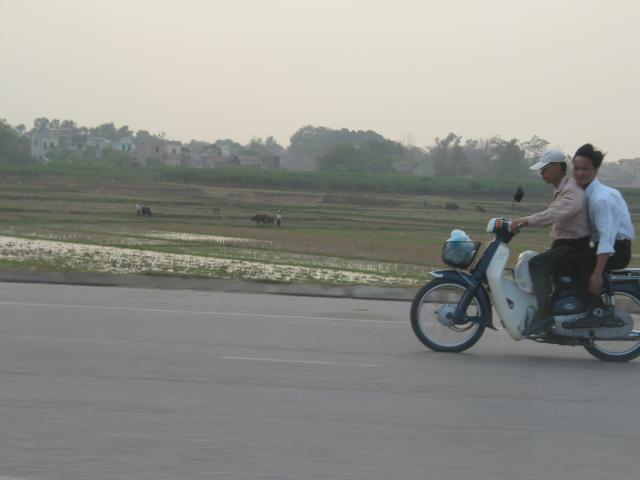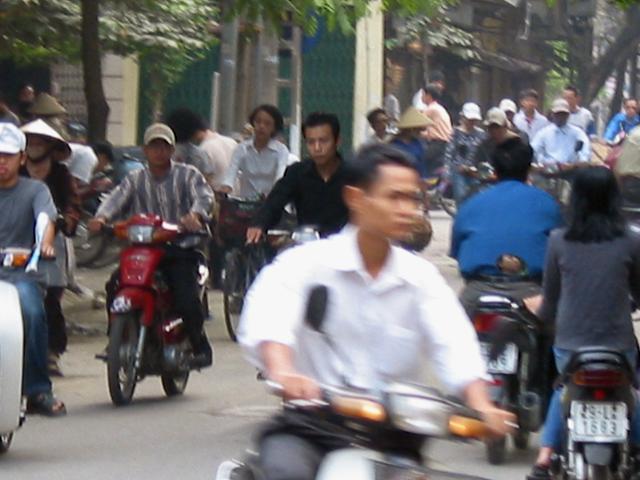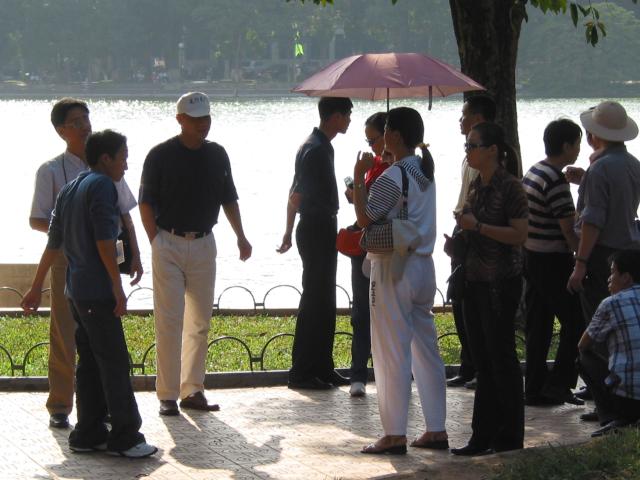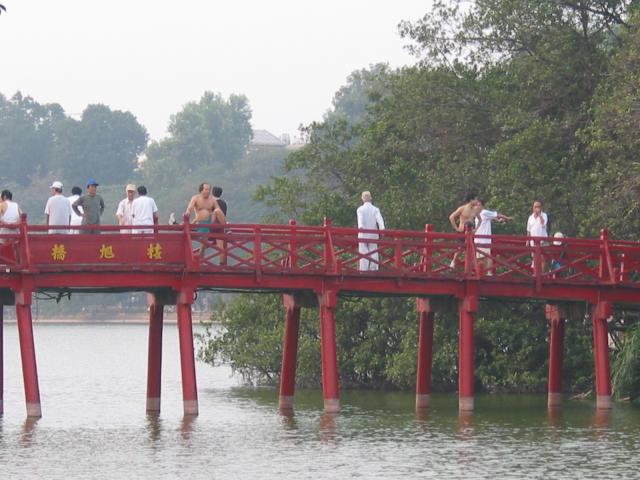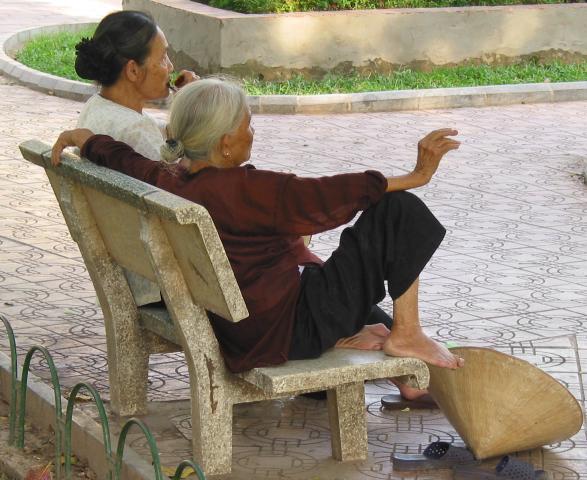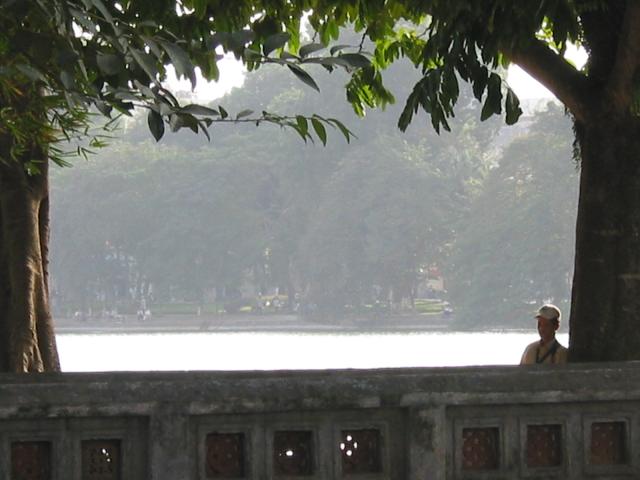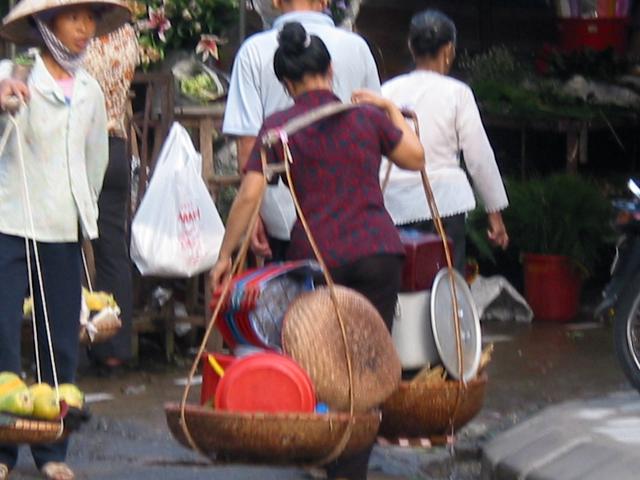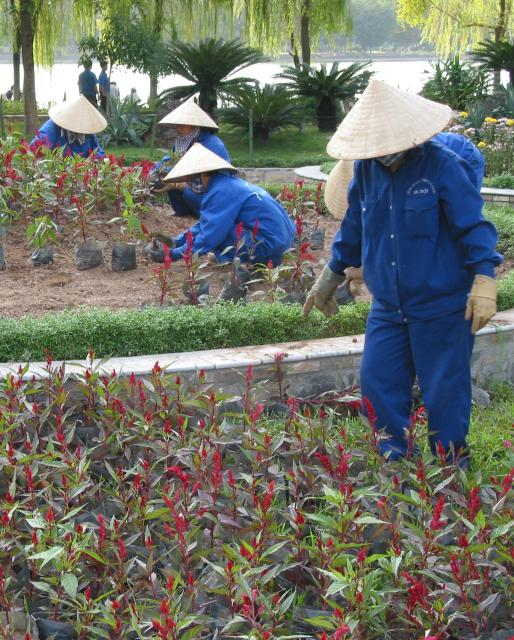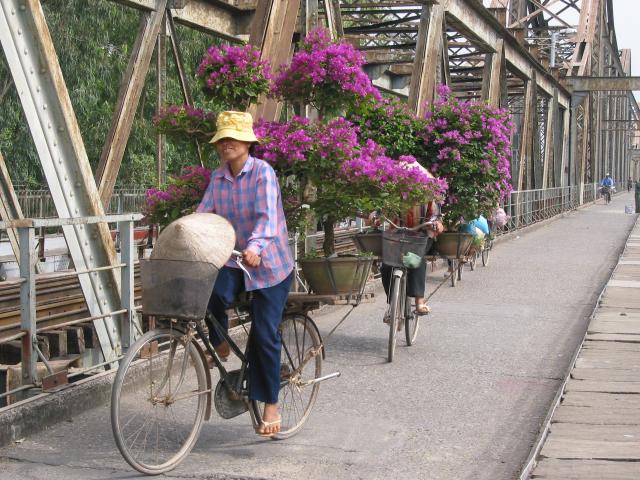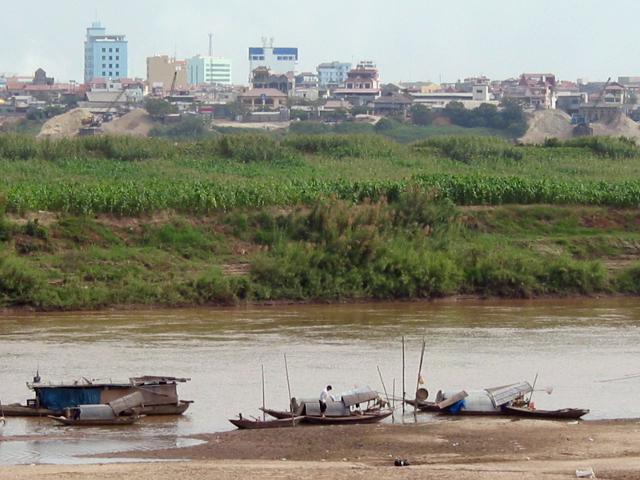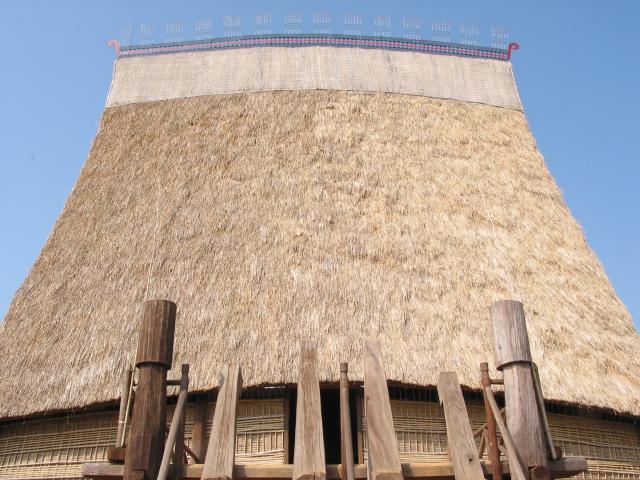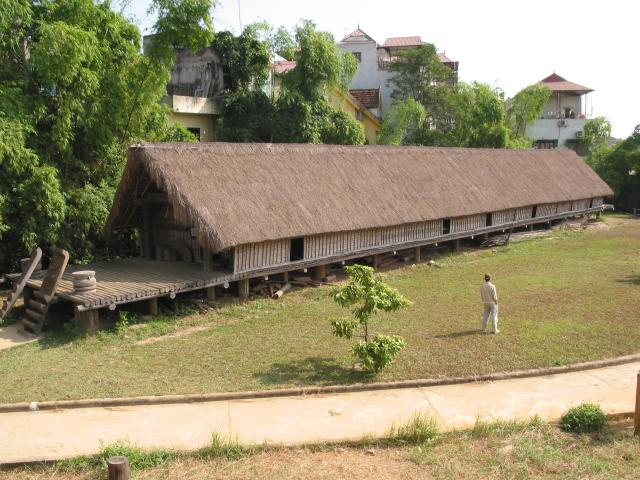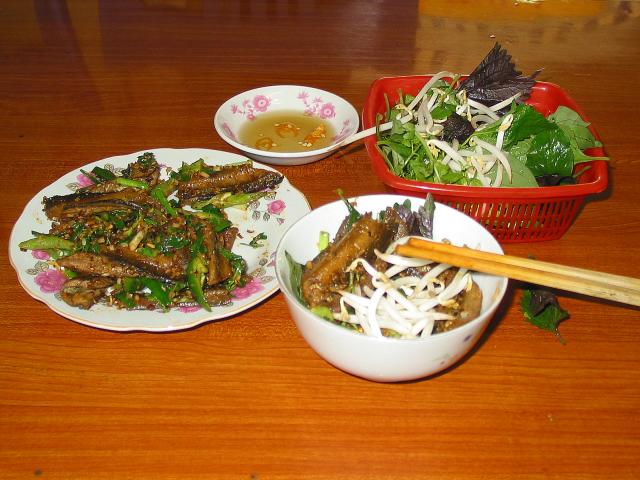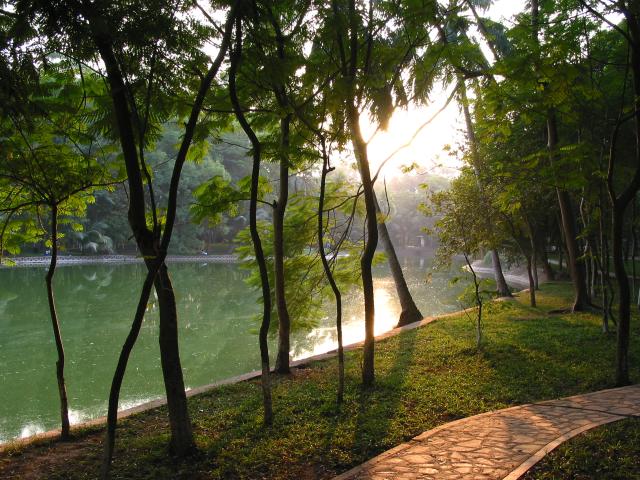
Photo Tour: Hello, Hanoi!
Hanoi is the capital of Vietnam.
(If I were Vietnamese, I’d spell the name Hà Nǭi — with accents and a
tone mark that you might not be able to see on your screen.) The first
time I heard of Hanoi was during what we Americans called the Vietnam
War (and what Vietnamese call the American War). I had vague old
visions of a sort of sinister place, with people scurrying around to
avoid the Americans’ bombs. But a child’s visions and the graphic
pictures I saw during the war weren’t much of the truth, I knew. The
stories I’d heard since were of friendly and forgiving people who live
in a beautiful country — a country that’s seen more than its share of
occupiers and wars. Hanoi has one of the main airports, so it was a
natural place to start my two-plus weeks in Vietnam.
Just as New York isn’t the USA, I knew that Hanoi wasn’t Vietnam.
(One Vietnamese man I met — who grew up in Hanoi, but got out in 1954,
as the French occupation was ending — told me that Hanoi wasn’t even
Hanoi anymore. The educated people fled, he said, and the communists
have brought in people from other parts of the country with their own
regional dialects and customs.) As it turned out, I didn’t do the
exploring of northwest Vietnam that I thought I would. I was getting
tired of traveling, so I decided to "veg out," and hang out, in Hanoi.
I saw this busy city instead of the peaceful countryside that, I read,
makes up so much of Vietnam.
Speaking of vegging out: if you love vegetables (and I do), the food
here is great — and cheap. Vietnamese have a way of taking anything
edible and making it delicious. Cautious eaters, beware! I don’t speak
the language, but I like to go where locals go. So I ended up in
restaurants, or with popular street vendors, looking at what other
people were eating and saying "I’d like some of that" — without more than a
general idea of what that
actually had in it. (A Vietnamese phrase book and food guide can be a
help, but some places don’t have menus printed or posted.) There’s meat
here, too — not just vegetables and
fruits — that Westerners aren’t used to. So don’t ask me what I ate,
because I don’t have much of a clue! But it sure was good.
Vietnam also has beautiful hotels and a wonderful wilderness to experience.
To get a larger version of any picture, click on it; a new window
should open. When you close that window, this window should still be
here.
Hanoi is a city on wheels... two
wheels. Motorcycles, motorbikes, and bicycles are everywhere: you can’t avoid ’em.
It’s sort of unusual to see just one, as you do in these first two
photos,
because they come in waves, in floods, often with no breaks to let
pedestrians saunter across the street. (And there are plenty of
pedestrians.)
|
So what’s a tourist to do? Do
like the locals: trust the drivers to
watch out for you — and don’t make any sudden moves. To cross the
street, look for a sort-of break in the flood, where the drivers will
have some room to maneuver, then walk slowly and steadily to the other
side
— keeping one eye out for any buses barreling toward you, in which
case you
should probably run! At
first, it
takes the same nerves of steel that you
might need to eat some of those mystery Vietnamese foods... but, after
a while, you’ll be crossing like a champion. I hope.
|
If you’re interested in narrow
streets, lots of people to watch, and lots of character too, the Old
Quarter of Hanoi is a good place to go. A main part of it is Hoan Kiem
lake. If you stand on the shore, you’ll be surrounded on one side by a
road that’s more of a one-way racetrack. On the other side of the shore
is the peaceful water, with views of buildings and trees on the opposite
shore of the lake.
All around will be people out for a stroll — and, first thing in the
morning, for some tai chi
(shadow boxing) exercise.
|
Although it’s surrounded by
traffic roaring (and honking... drivers use their horns every chance
they get...), the narrow park around the lake can be really peaceful:
|
Not everyone is relaxing,
though. You’ll find lots of workers around this part of town from
sunrise
until way past dark:
|
From the north side of the Old
Quarter, a bridge stretches a kilometer or more to the east, across an
area of homes and businesses, then across the Red River. It used to
carry trains, vehicles, and (on a narrow little sidewalk) pedestrians.
Now there’s a new bridge for automobiles and trucks, so the old roadway
has been taken over by bicycles and people. Walking across the old
bridge is a great way to get away from the noise of the city, look out
on the river and the fields along it. (And yes, those people on the
bicycles are carrying plants. People carry everything on bicycles and
motorbikes, including things bigger than the bike itself!)
|
On the west side of Hanoi, a
little out of the way but worth the trek, is the Vietnamese Museum of
Ethnology. (Take the number 14 bus from the Old Quarter to Nguyen Van Huyen
street, then walk south.) The museum tells the story of Vietnam’s
various peoples (or "minorities," as they’re often called).
If you don’t visit much of the countryside (as I didn’t), this will give
you a feel for what you’re missing. The museum’s open-air exhibit has
a burial tomb and reconstructed houses from around the country.
Inside the museum are costumes, crafts, videos, and much more.
On the left below is a communal house from the Bahmar people in Kon Tum
province. (This is just the top part. It’s actually raised three
meters on stilts: the wood you see at the bottom of the photo are the
tops of big logs that have been carved into steps. And have a look at the top
of that roof! You can click on the picture for a larger view.)
On the right is a longhouse from an Ede family in Daklak province. (I took
the photo from the front of the Bahmar house, which gives you an idea of how
high those Bahmar houses are!) The Ede families are matriarchal (they’re led
by women). Multiple generations, as well as daughters-
and sons-in-law and their families, live in the same long house. You
can walk inside these beautifully reconstructed homes, and others too:
|
Back on the main street near the
bus stop is a restaurant that specializes in eel (lu'o'n). Like most of the
restaurants you’ll see along the streets, this has an open front
and a couple of rows of tables inside. I had lu'o'n nu'o'ng xa o't (I left out
some accents and tone marks, but you get the idea :). That’s grilled
eel seasoned with lemon grass and chilli. See the picture below, at
the left. From what I’ve seen so far,
this is a pretty typical Vietnamese meal. You get an empty bowl and
some chopsticks (here, in the front at right), which you fill
repeatedly from the other plates and bowls. At the left is a plate with
the meat. In the middle at the back is a bowl of fish sauce with
chopped chilli, which you dip other food into or spoon over your
eating-bowl. You’ll also get other bowls or plates of goodies like rice
noodles, sprouts, and other vegetables. Here, the red basket at the
back has various yummy greens. This meal is a bit on the expensive side
for a meal at an average Vietnamese restaurant: it cost just over one
US dollar (!).
If you need a good walk after your lunch, you can stop by the big
complex of parks and buildings around Ho Chi Minh’s mausoleum. (It’s on
the number 14 bus route, too.) The shot at the right below is in the
botanical garden which, improbably, also has a roller-skating rink
at one corner:
|
[Previous page:
Glimpses of Guangzhou]
[Next page:
Ngoc Son Temple, Hanoi]
[Tour start: Around the World 2003]
[Tours]
(These photographs are Copyright © 2003 by Jerry Peek.
Much higher-resolution versions of most images,
and many other images too, are available at
Jerry Peek Photography.
Photos are available at reduced prices, or free, for non-commercial use.)
Contact us

